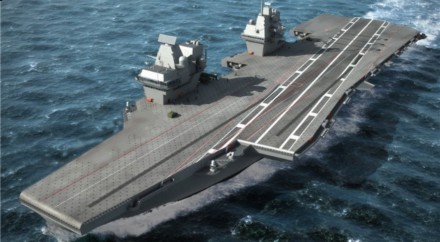These have to be the happiest of days for pacifists. With a growing sense of disillusionment with our wars and our ability to fight wars, the Strategic Defence and Security Review just heaps joy upon joy for them. Now the Royal Navy is to be saddled with two massive aircraft carriers, useless without aircraft and which the Navy must scrap much of its surface fleet to pay for. The Army and the Royal Air Force, both apparently clinging to the need to defend Northern Europe from a Soviet Pact invasion, a threat that vanished decades ago, have sacrificed everything else to keep that dream alive. All of which leaves brave men and women fighting in the front line to pay the ultimate price for years of neglect.
Who should the finger of blame point towards? The last government appointed some of the most breathtakingly incompetent ministers in our history, but if they are given no leadership from above, and they are never held to account in Parliament, is it their fault for being useless or ours for letting them get away with it? And if the Ministry of Defence is run by clowns, have our top generals and admirals been moulded by their environment or are they equally culpable for the mismanagement of the department over many years? It’s hard to imagine how any senior officer who puts the case for military need above that of political expediency can further his career.
And that is a large part of the problem. We have far too many senior officers scrambling up the greasy pole to collect more stars before retiring to a comfortable job in the defence industry which is milking and bilking the defence budget. We already have more admirals than ships even before the planned round of cutbacks. But the bloated empire that is Whitehall will not be scaled back accordingly. It will be the soldier, the sailor, and the airman who will again bear the brunt of economic cutbacks. There will be fewer of them, with poorer equipment, and less of it. All of which ignores the fact that we are in a hot, shooting war with al Qaeda.
We need to confront terrorism everywhere. We need to tackle its radicalising influence here in the UK, and we need to be capable of responding to terrorist incidents or preferably of detecting and preventing them beforehand. We need to be tracking them down to their training camps and flushing them out of their safe havens, worldwide. That’s why we were in Afghanistan originally, that’s why we should be in the North West Provinces if the Pakistan government won’t assist. Hot spots of radial Islam in Yemen, Somalia, Indonesia and elsewhere also need to be brought into the equation and we need to deal with those politically if at all possible but militarily if not.
To do this we need more military resources, not fewer. We need more armed police or territorial army manpower ready to deal with a Mumbai-style attack wherever it might occur. That means more soldiers and army camps across Britain. We need sufficient emergency resources to cope with casualties after a bomb attack, again wherever it might occur which means more ambulances, hospitals and medics across the country. And we need intelligence gathering to tell us what the terrorists are planning. We also need to engage with moderate Moslems, to counter the extremist views being put across by radical clerics, and to reassure them that this isn’t a war against Islam.
But we also need to be able to deploy an independent army to any location in the world. Fully equipped, fully trained, and fully supported on land, sea and in the air. We should not require support from any other country to do this, but we should be ready and willing to support others should we be called upon to do so. Finally, and most important, we need the political will. Defence expenditure is not something to be weighed against other peace-time budgetary considerations. It’s not a choice between a new warship or a cross-rail link. We either spend the money and defend ourselves adequately, or we have no need for budgets for anything. This is a matter of survival, plain and simple. We are at war.
These may not be happy days for pacifists after all. White Poppy, anyone?

